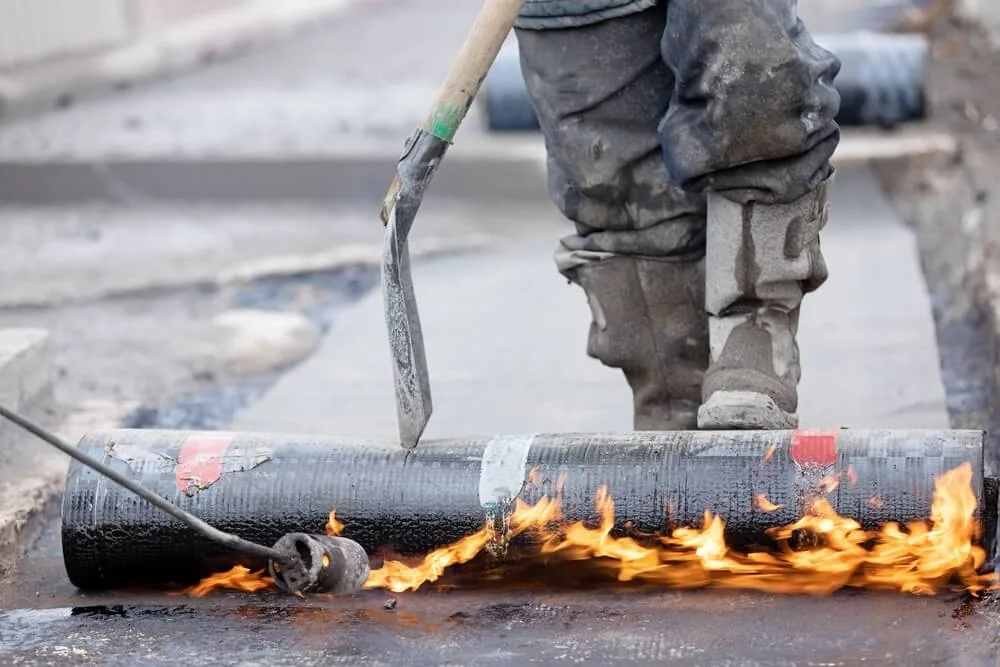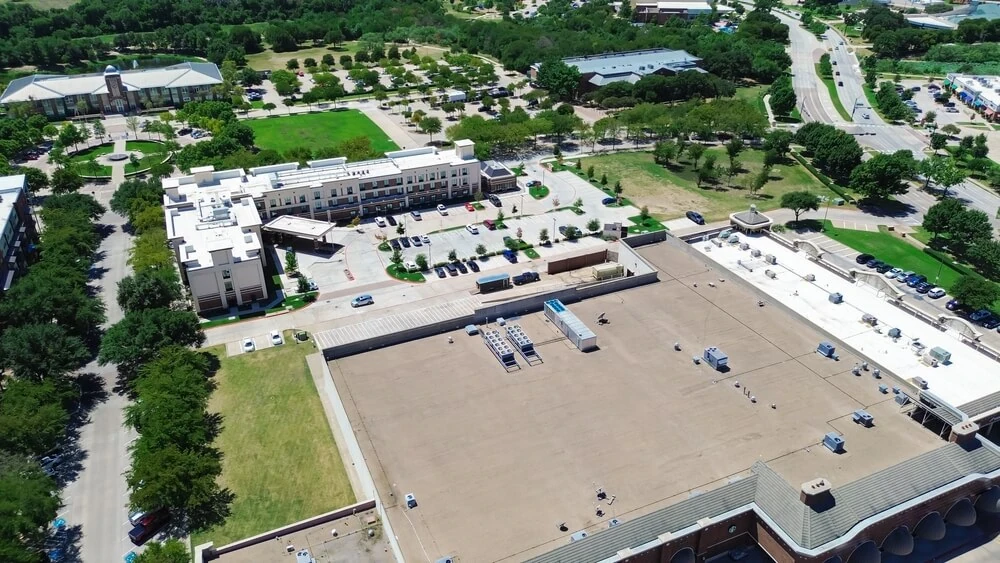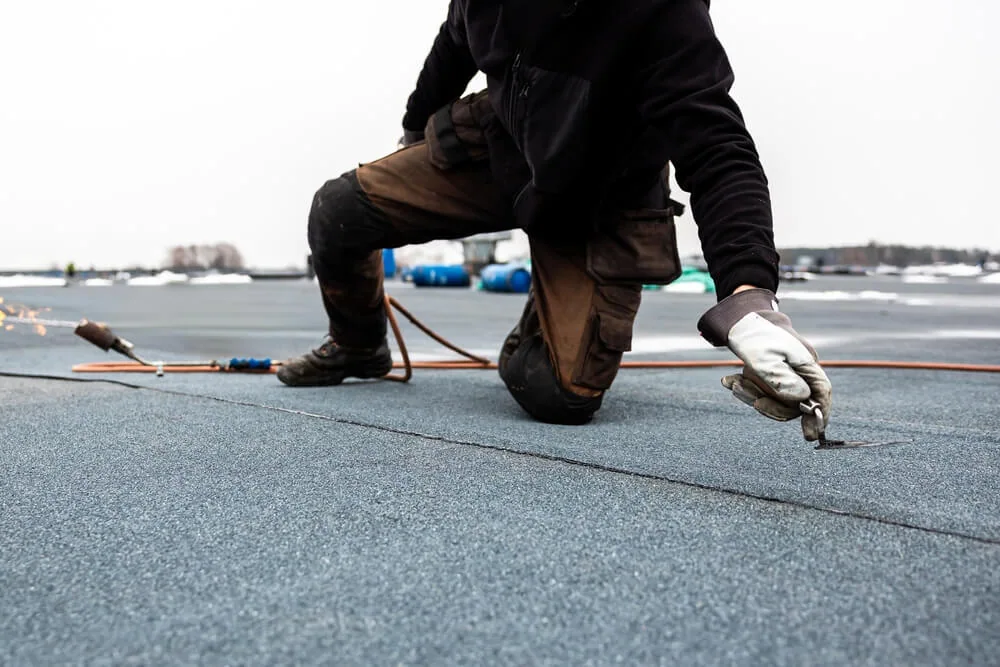When it comes to protecting your commercial building, a 2-ply roofing system provides a robust, durable solution. This roofing system, made up of two layers of waterproof material, offers enhanced protection against the elements and is ideal for low-slope roofs.
If you’re a building owner or contractor considering roofing systems for a commercial property, understanding 2-ply roofing and its benefits are key. In this guide, we’ll explore how these systems function, their advantages, and key considerations when it comes to installation and maintenance.
What Is a 2-Ply Roofing System?
A 2-ply roofing system consists of two layers of a roofing material known as modified bitumen. The system is installed over the roof’s surface. Two-ply roof systems are known for their superior durability, weather resistance, and excellent waterproofing capabilities, as both layers offer protection.
They are commonly used for low-slope roofs, offering a reliable solution for protecting the building against water penetration, harsh weather conditions, and temperature extremes.
Modified Bitumen
Modified bitumen is the go-to material for 2-ply roofing systems, known for its high durability and flexibility. This material is combined with polymer modifiers to enhance its performance, making it an excellent solution for low slope commercial buildings. Cap sheets, which are the top layer of the system, provide added protection against the elements. They can be applied using hot asphalt or a torch-down installation method, ensuring a secure and long-lasting bond.
Benefits of a 2-Ply Roofing System
- High Durability: A 2-ply roofing system offers superior durability compared to single-layer options. The additional layer provides increased resistance to wear and tear, making it a great choice for commercial buildings in areas with fluctuating temperatures, harsh weather conditions, or roofs that experience a lot of foot traffic.
- Excellent Waterproofing: The dual layers in a 2-ply system create a waterproof barrier, protecting your building from water penetration. These systems are perfect for low-slope roofs, where water runoff can be slower and lead to leaks if not properly managed.
- Weather Resistance: The materials used in a 2-ply system are designed to withstand extreme weather conditions. Whether it’s the intense heat of summer or freezing temperatures in winter, these roofing systems offer resistance to the elements, making them a long-lasting solution for commercial buildings.
- Cost-Effective: While a 2-ply roofing system may have a higher initial cost compared to single-layer options, its long lifespan and minimal maintenance requirements make it a cost-effective investment in the long run.
- Ease of Installation: With an experienced installation crew, a 2-ply roofing system can be installed relatively quickly, minimizing disruptions to your business operations.
Installation Process: How It Works
A two-ply roofing system, or any roofing system for that matter, is only as good as its installation. Installing a 2-ply roofing system requires precision and expertise to ensure long-term performance. Here’s a breakdown of the process:
- Surface Preparation: The roof surface needs to be thoroughly cleaned and prepared before installation. Any debris, dirt, or old roofing material should be removed to ensure proper adhesion of the new layers. Also, it’s important that any moisture is dried before installation as trapped moisture can impact adhesion.
- Insulation and Substrates: Insulation materials may be installed before the roofing layers to enhance energy efficiency. The substrates, typically made of fiberglass or other durable materials, provide a stable base for the roofing system to improve strength and integrity.
- Layering the Membrane: The first layer of the membrane is applied to the roof surface using hot asphalt or a torch. A second layer (the cap sheet) then follows, which is securely bonded on top. The two layers create a strong, weather-resistant surface.
- Final Inspection and Warranty: Once installed, the installation crew performs a thorough inspection to ensure proper adhesion and performance.
Considerations for Building Owners
While a 2-ply roofing system is a durable and effective solution, there are a few important considerations for building owners:
- Maintenance: Regular inspection and maintenance are key to ensuring the long-term performance of your roofing system. Look for signs of wear, such as cracked cap sheets or loose seams, and address them promptly to avoid more costly repairs.
- Safety Concerns: Safety is paramount during installation. Ensure that qualified professionals handle the job and follow all safety guidelines when working with hot asphalt or torches.
- Weather Conditions: Your installation crew should be mindful of the weather during installation. Certain temperatures and moisture may affect the bonding process, and installing in harsh conditions may lead to issues down the line.
The Bottom Line
A 2-ply roofing system is a reliable, durable choice for low-slope roofs on industrial and commercial buildings. With its excellent waterproofing, high durability, and ability to withstand harsh weather conditions, two-ply roofing offers exceptional protection. Whether you’re upgrading an existing roof or installing a new system, the benefits of a 2-ply roofing system make it a popular choice for many commercial building owners.
If you’re considering a 2-ply roofing system for your commercial building, reach out to Nations Roof today. We offer a wide selection of roofing options, including single and two-ply systems to protect your building. We have years of experience in the commercial roofing industry, so we can help you pick the best roofing system for your building. You can rely on us.





